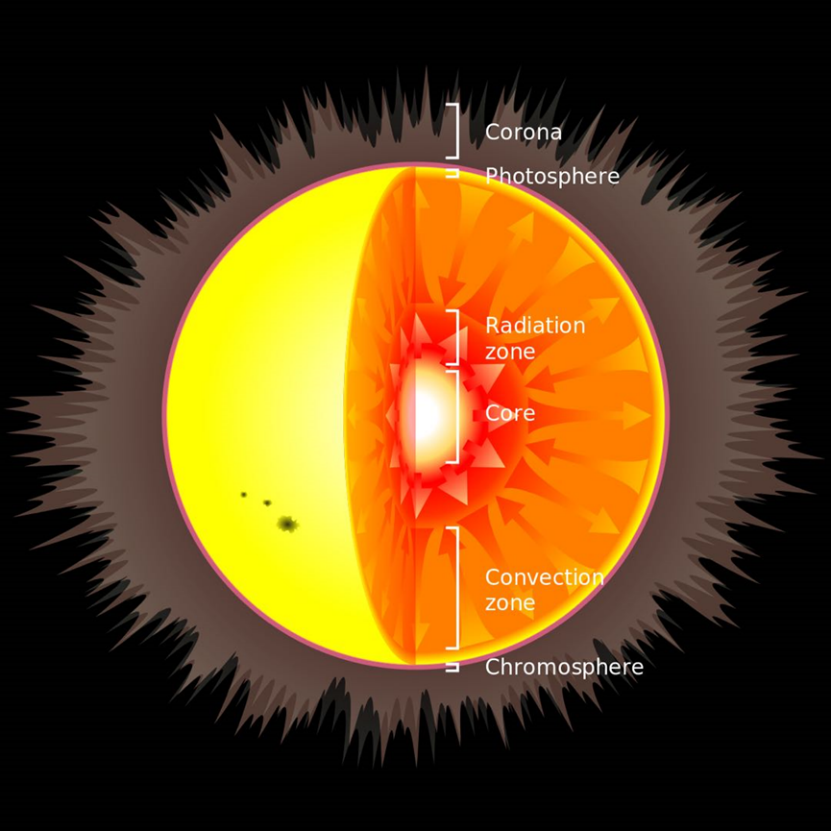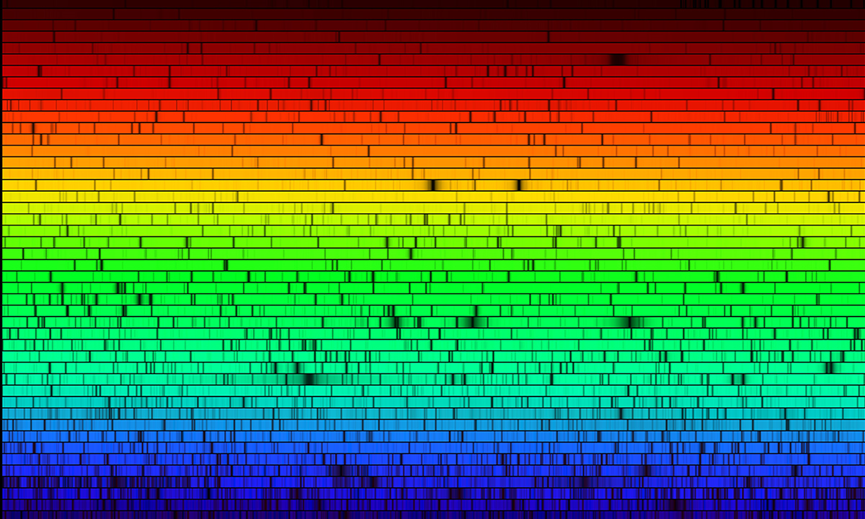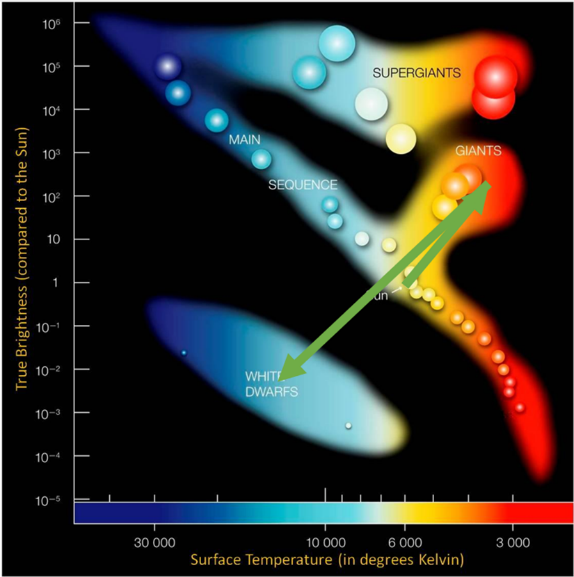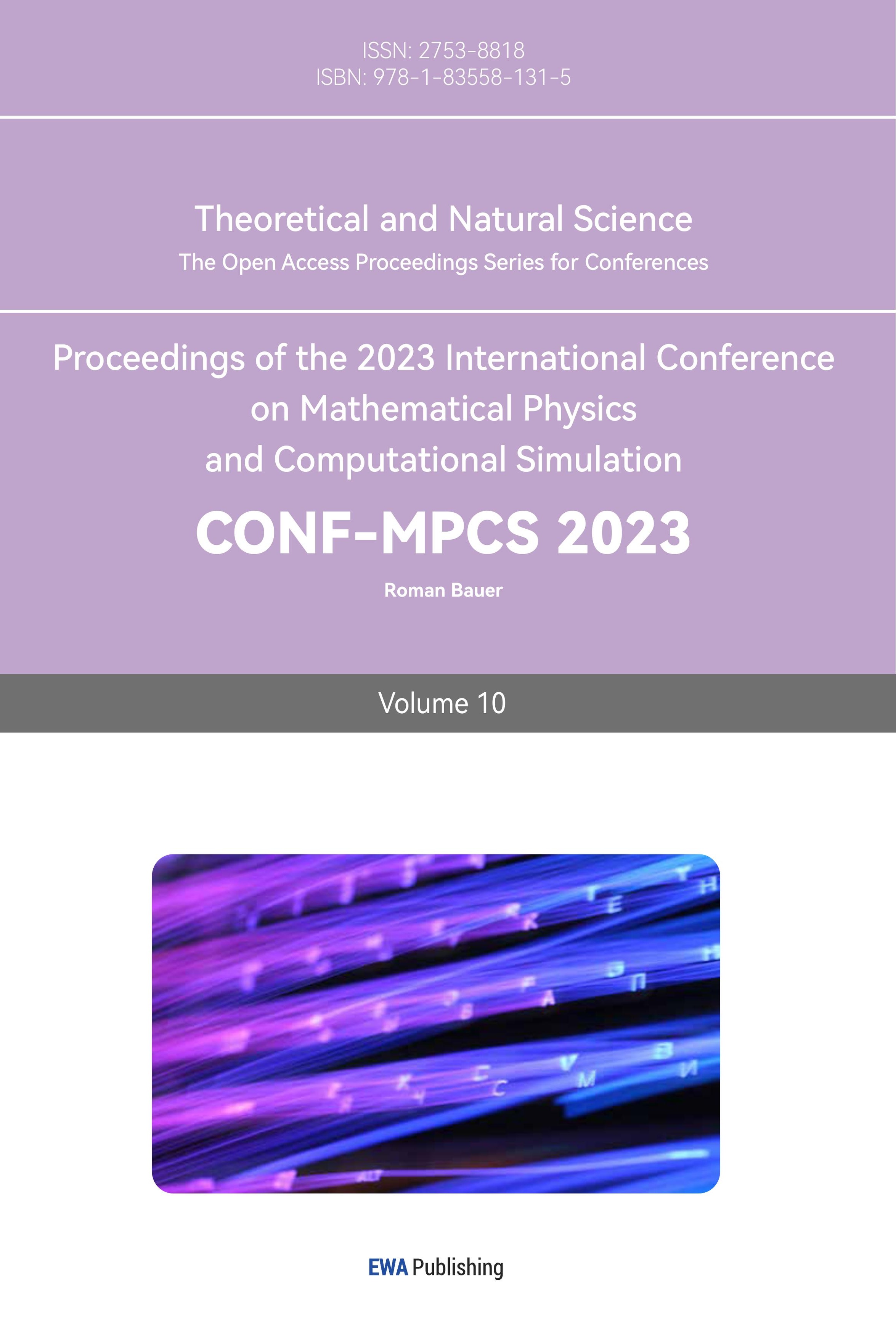1. Introduction
It’s universally acknowledged that there are 2 trillion galaxies, and we live in one of them called the Milky Way. More accurately, we live in the solar system of the Milky Way in which the centre is the sun. The sun has a large diameter of 864,000 miles and is 8.3 kiloparsecs from the earth. As for its formation, about 4.6 billion years ago, a giant nebula that floated in one of the spiral arms of the Milky Way galaxy began to contract and finally collapsed in on itself. Afterward, the temperature of the atoms in the nebula rose by a large amount, so fusion started to take place in the centre of the atoms. In this way, our sun came into being. Moreover, the sun has a high surface temperature, so it radiates radiation and transfer heat to the earth, providing the necessary warmth to survive. Also, the sun has high luminosity, so it has great brightness, providing essential light for us. Lastly, the sun's gravity helps keep our earth in a suitable orbit around the sun, which means it keeps the earth in the habitable zone. Thus, the sun is very important to our survival. The solar wind can change the magnetic field intensity, thus disturbing our earth's magnetic field, thus disturbing our communication. Also, the solar wind sends strong elemental charges to the electric power grid and affects the transfer of electricity. Therefore, human activity is hugely affected by the sun.
This article deals with the formation of the sun, the current overview of the sun and its evolution in the future. In more detail, the first part of the main body is about the composition of a giant nebula about five billion years ago, how this giant nebula evolved into the sun by collapsing in and having nuclear fusion in its atoms, and the formation of the solar system. The second part of the main body concerns the current situation of the sun, which includes fusion in the core of the sun, conditions that need to be met for the fusion reaction to take place, how far the sun is from us, ways of determining the distance and sun’s intensity and light spectrum. The last part of the main body deals with the evolution of the sun, which incorporates an illustration of the evolution.
This review is aimed at becoming an organization and synthesis of past works on sun and providing readers with comprehensive and understandable information on this topic and introduce researchers into this field.
2. The formation of the sun and the solar system
2.1. The formation of the sun
Historically, about 4.6 billion years ago, a tremendous cloud called nebula floated in one spiral arm of the Milky Way galaxy. This cloud consisted of gas and dust, mostly hydrogen and helium, heavier atoms only accounted for a small percentage. These heavier atoms had formed earlier than the formation of the sun while other stars aged and died. This nebula began to contract at some time, collapsing in on itself. The atoms began to collide with one another, which generated a lot of heat. In the rising temperature, the atoms jostled more frequently and violently. Eventually, the atoms reached a temperature at which the protons in the atoms started to fuse, in a process called nuclear fusion. Through nuclear fusion, a small proportion of matter had been transformed into a considerable amount of energy, and a star called sun was born [1].
2.2. The formation of the solar system
The solar system formed along with the sun, and I will explain how they formed. Initially an interstellar cloud formed because an accumulation of gas, plasma, and dust in our and other galaxies had occurred and started to evolve. Afterward, the sun formed within the interstellar cloud, and matter started to accumulate around the sun. The conversion from this matter to planetesimals followed, and then the accretion of the planetesimal followed. Finally, satellites had formed around the planets [2].
3. The current state of the sun
3.1. The structure of the sun
The sun is mainly divided into six layers: a thermonuclear reaction core at the centre, a radiative zone outside the core, outside which there is a convection zone. A radiative zone, and a solar atmosphere are outside the convection zone [3].
According to nuclear physics theory, the centre of the sun is a thermonuclear reaction core. The core of the sun accounts for 1/4 of the entire solar radius but is about half the mass of the entire sun. This indicates that the density of matter in the central region of the sun is very high up to 160 grams per cubic centimetre. Under the strong gravitational attraction of the sun, the core of the sun is in a state of high density, high temperature, and high pressure. It is the birthplace of a great amount of energy [3].
The transfer of energy generated in the core of the sun mainly depends on the conduction by radiation. Outside the central core of the sun there is the radiative zone which is a layer with an inner radius of 0.25 times the solar radius and an outer radius of 0.86 times the solar radius. The temperature, density, and pressure decrease when the distance from the centre of the sun decreases. In terms of volume, the radiative zone accounts for most of the sun [3].
In addition to radiation, the energy generated in the core of the sun also propagates outwards by convection. The convection layer’s inner radius is 8.6 times the solar radius, and the outer radius is just the solar radius. The gas in this layer is very unstable, and the properties of the gas vary greatly, resulting in significant convective motion. The convection layer is the outermost layer of the sun's internal structure. Outside the solar convection zone there is the solar atmosphere. The solar atmosphere can be divided into the photosphere, chromosphere, and corona [3].

Figure 1. The structure of the sun [4].
3.2. The current position of the sun measured from the earth
As for its current position, the sun is 8.3 kiloparsecs from the earth. The unit parsec is defined as the distance from a nearby star to the sun when the parallax angle which is half the angle moved against the background of distant stars in 6 months is 1 arcsecond. The distance from the earth to the sun is calculated using the parallax method. We conduct the parallax method by measuring the parallax angle, and then applying trigonometry [5, 6]. Another way of determining the distance utilizes Kepler’s Third Law.
The derivation of the Kepler’s Third Law:
\( m{ω^{2}}r=\frac{GMm}{{r^{2}}} →m{(2π\frac{1}{T})^{2}}r=\frac{GMm}{{r^{2}}} →{T^{2}}=\frac{4{π^{2}}}{GM}{r^{3}} \)
where T is the orbital period, M/m is mass and r is the radius of the orbit, typically we measure the period of the orbit of our earth around the sun and apply the equation to obtain r ( \( r=\sqrt[3]{\frac{GM{T^{2}}}{4{π^{2}}}} \) ) [7, 8].
3.3. The ongoing nuclear fusion
It is consistently fusing hydrogen in its core as it meets certain conditions for fusion reaction to occur. The main conditions required are extremely high temperature, high density, suitable container which in this case in the core for the fusion reaction. A High temperature is required because high average molecular kinetic energy of hydrogen is needed so as to overcome the repulsive force between positively charged protons. High density is required because the high rate of collision is needed to ensure decent rate of reaction. A suitable reaction vessel is needed because if not, the material undergoing fusion would touch the inappropriate vessel and stop the fusion [9-11].
3.4. The intensity and luminosity of radiation from the sun
In this paragraph, we will examine the intensity of radiation and luminosity radiated from the sun and the spectrum of radiation received on the earth. First, intensity is formulated using \( I=\frac{L}{4π{r^{2}}} \) , where intensity is denoted by I, the distance by r, and luminosity by L. The formula can be used to calculate the distance between the sun and nearby stars [9, 10, 12]. Also, it can be used to determine the surface temperature, or the surface area of the sun according to the Stefan-Boltzmann law \( L=σA{T^{4}} \) , where T denotes the surface temperature and A is the surface area [9, 10, 13]. Besides, Wien’s law \( {λ_{max}}T=2.989×{10^{-3}} m K \) can be used to determine the wavelength at which the maximum energy is emitted from the sun [9, 10, 14].
The graph below depicts the solar spectrum, in particular the visible spectrum of the solar spectrum. This colourful pattern can be seen if you shine a ray of sunlight through a glass prism. Experts used a large, prism-like experimental instrument to create this solar spectrum that is extremely detailed. The uppermost part of the spectrum is red light, with a wavelength of \( 7×{10^{-7}} \) meters (700 nanometres). It covers all the visible light colours, including orange, yellow and green, at the lowermost part, there are blue and violet colours with a wavelength of \( 4×{10^{-7}} \) meters (400 nanometres). This spectrum has to be cut into strips since the spectrum is so detailed and long; each of the 50 strips spans a wavelength range of \( 6×{10^{-9}} \) meters (6 nanometres). The dark lines across are due the fact that light of certain frequency is being absorbed by various atoms in the sun’s atmosphere. This dark-line absorption spectrum is like a fingerprint of the sun; it can provide scientists with a lot of information associated with the chemical composition of the sun. Just to clarify, this spectrum was created by experts who used the McMath–Pierce solar telescope at the National Solar Observatory [15].

Figure 2. Solar radiation spectrum received on the earth (15).
4. Future evolution of the sun and the final destiny of the earth
4.1. Future evolution of the sun
The sun will evolve in the future as time goes. Firstly, when hydrogen fusion ends main sequence star(sun) evolve into a red giant star. This happens when the sun sits near the top of the main sequence. Then, when helium fusion ends red giant star(sun) evolve into a white dwarf star. Red giant stars are located above the main sequence. Red giant star is larger (in surface area) and have a lower surface temperature and that white dwarf star is smaller (in surface area) and have a higher surface temperature. Thus, we can plot the evolution of sun on the Hertzsprung-Russell (HR) diagram which shows the relationship between luminosity L and surface temperature T for a range of stars [3, 16].

Figure 3. Illustration of the sun evolution in the future on the HR diagram [17].
4.2. Final destiny of the earth
In 2008, two astrophysicists constructed a model of the evolution of the sun. According to their calculations, the mass loss of the sun increases after it becomes the red giant. When the sun expands to its maximum volume at this stage (approximately 250 times the current solar radius), the mass loss has reached approximately 33%. If we do not consider the tidal force exerted by the sun on the earth as the sun expands and becomes very close to the earth, the decrease in the mass of the sun will result in the radius of the earth's orbit around the sun increasing by a half, reaching about 320 times the current radius of the sun. In this case, the earth may still be able to escape the fate of being engulfed by the sun. However, after taking the consideration that the angular speed of rotation of the sun after the expansion is much slower than that of the earth, and the tidal force that the sun exerts on the earth will drag the earth towards the sun, their calculations indicate that the earth will drift outward at a slower rate than the sun's expansion, so the earth will eventually be engulfed by the sun. They estimate that this engulfing process will occur five hundred thousand years before the sun expands to its maximum size, 7.59 billion years later from now on. If the model is correct, as long as the earth's current orbit is moved outward by 0.15 times the astronomical unit (earth's orbit radius is 15% larger), the earth can barely escape the fate of being swallowed by the sun. Once getting through the corona and getting below the sun's surface, the earth will be bombarded by a large amount of plasma matter surrounding it, and its orbit will continue to decrease, rapidly falling into the extremely hot core of the sun. Note that except for the three nearest planets to the sun will be swallowed by the sun, all other planets in the solar system will survive. Moreover, for a period of time after the engulfment, the survived planets will have a good time actually. Also, according to their calculations, the habitable zone of the solar system will drift into outer solar system, and liquid water will exist in areas far beyond Pluto's current orbit [3, 16].
5. Conclusion
About five billion years ago, a giant cloud in the spiral arm of the Milky Way galaxy contracted and collapsed in on itself. After separating, the atoms started to justle each other, thus generating heat. Finally, the temperature was enough for fusion to take place. As fusion occurred, a tiny bit of matter transformed into a whole lot of energy, and a star was born. In this way, our sun came into being. The sun formed within an interstellar cloud that was accumulating matter, after which the conversion from this matter to planetesimals and then accretion of the planetesimal followed. Finally, satellites had formed around the planets. The sun has 6 layers: core, radiative zone, convection zone, photosphere, chromosphere, and corona. The sun is 8.3 kiloparsecs from the earth. The distance from the earth to the sun is calculated using the parallax method. We conduct parallax method by measuring the parallax angle, and then applying trigonometry. Another way of determining the distance utilizes Kepler’s Third Law, which requires the measurement of the earth orbital period around the sun. It is consistently fusing hydrogen in its core. Mainly because of the extremely high temperature in the core, the high density of the material undergoing fusion, and suitable container(core) for the fusion vessel. The intensity of the sun radiation is formulated using \( I=\frac{L}{4π{r^{2}}} \) which can be used to calculate the distance between the sun and nearby stars. Wien’s law \( {λ_{max}}T=2.989×{10^{-3}} m K \) can be used to determine the wavelength at which the maximum energy is emitted from the sun. The sun will evolve in the future as time goes on. Firstly, when hydrogen fusion ends main sequence star(sun) evolves into a red giant star. Then, when helium fusion ends red giant star(sun) evolves into a white dwarf star. Once the sun becomes the red giant, the earth, Mercury, and Venus will be engulfed by the sun.
References
[1]. Cameron, A. G. W. (1962). The formation of the sun and planets. Icarus, 1(1-6), 13-69.
[2]. Alfvén, H. (1982). The origin of the solar system. In Evolution in the Universe (p. 31).
[3]. Sackmann, I., Boothroyd, A. I., & Kraemer, K. E. (1993). Our sun. III. Present and future. Astrophysical Journal v. 418, p. 457, 418, 457.
[4]. Sakurambo, bigrocksolid. (2007) High School Earth Science/The sun. http://en.wikibooks.org/wiki/High_School_Earth_Science/The_Sun. License: CC BY-SA: Attribution ShareAlike
[5]. Walraven, R. (1978). Calculating the position of the sun. Solar energy, 20(5), 393-397.
[6]. Arenou, F., & Luri, X. (1998). Distances and absolute magnitudes from trigonometric parallaxes. arXiv preprint astro-ph/9812094.
[7]. Young, H. D., Freedman, R. A., Sandin, T. R., & Ford, A. L. (1996). University physics (Vol. 9). Reading, MA: Addison-Wesley.
[8]. Tan, A., & Chameides, W. L. (1981). Kepler’s third law. American Journal of Physics, 49(7), 691-692.
[9]. Benn, M., & George, G. (2015). Edexcel A Level Physics Student Book 1. Hachette UK.
[10]. Akrill, T., & George, G. (2015). Edexcel A Level Physics Student Book 2. Hodder Education.
[11]. Fiorentini, G., Ricci, B., & Villante, F. L. (2004). Nuclear fusion in the sun. Progress of Theoretical Physics Supplement, 154, 309-316.
[12]. Wong, L. T., & Chow, W. K. (2001). Solar radiation model. Applied energy, 69(3), 191-224.
[13]. Wellons, M. (2007). The Stefan-Boltzmann Law. Physics Department, The College of Wooster, Wooster, Ohio, 44691, 25.
[14]. Biermann, M. L., Katz, D. M., Aho, R., Diaz‐Barriga, J., & Petron, J. (2002). Wien’s law and the temperature of the sun. The Physics Teacher, 40(7), 398-400.
[15]. NASA. (2017) The Solar Spectrum. https://solarsystem.nasa.gov/resources/390/the-solar-spectrum/ N.A.Sharp, NOAO/NSO/Kitt Peak FTS/AURA/NSF
[16]. Schröder, K. P., & Connon Smith, R. (2008). Distant future of the sun and earth revisited. Monthly Notices of the Royal Astronomical Society, 386(1), 155-163.
[17]. European Southern Observatory. (2007) Hertzsprung-Russell Diagram. https://www.eso.org/ public/images/eso0728c/ ESO/José Francisco (josefrancisco.org)
Cite this article
Ke,J. (2023). The essential sun: Its past, present, and future. Theoretical and Natural Science,10,79-84.
Data availability
The datasets used and/or analyzed during the current study will be available from the authors upon reasonable request.
Disclaimer/Publisher's Note
The statements, opinions and data contained in all publications are solely those of the individual author(s) and contributor(s) and not of EWA Publishing and/or the editor(s). EWA Publishing and/or the editor(s) disclaim responsibility for any injury to people or property resulting from any ideas, methods, instructions or products referred to in the content.
About volume
Volume title: Proceedings of the 2023 International Conference on Mathematical Physics and Computational Simulation
© 2024 by the author(s). Licensee EWA Publishing, Oxford, UK. This article is an open access article distributed under the terms and
conditions of the Creative Commons Attribution (CC BY) license. Authors who
publish this series agree to the following terms:
1. Authors retain copyright and grant the series right of first publication with the work simultaneously licensed under a Creative Commons
Attribution License that allows others to share the work with an acknowledgment of the work's authorship and initial publication in this
series.
2. Authors are able to enter into separate, additional contractual arrangements for the non-exclusive distribution of the series's published
version of the work (e.g., post it to an institutional repository or publish it in a book), with an acknowledgment of its initial
publication in this series.
3. Authors are permitted and encouraged to post their work online (e.g., in institutional repositories or on their website) prior to and
during the submission process, as it can lead to productive exchanges, as well as earlier and greater citation of published work (See
Open access policy for details).
References
[1]. Cameron, A. G. W. (1962). The formation of the sun and planets. Icarus, 1(1-6), 13-69.
[2]. Alfvén, H. (1982). The origin of the solar system. In Evolution in the Universe (p. 31).
[3]. Sackmann, I., Boothroyd, A. I., & Kraemer, K. E. (1993). Our sun. III. Present and future. Astrophysical Journal v. 418, p. 457, 418, 457.
[4]. Sakurambo, bigrocksolid. (2007) High School Earth Science/The sun. http://en.wikibooks.org/wiki/High_School_Earth_Science/The_Sun. License: CC BY-SA: Attribution ShareAlike
[5]. Walraven, R. (1978). Calculating the position of the sun. Solar energy, 20(5), 393-397.
[6]. Arenou, F., & Luri, X. (1998). Distances and absolute magnitudes from trigonometric parallaxes. arXiv preprint astro-ph/9812094.
[7]. Young, H. D., Freedman, R. A., Sandin, T. R., & Ford, A. L. (1996). University physics (Vol. 9). Reading, MA: Addison-Wesley.
[8]. Tan, A., & Chameides, W. L. (1981). Kepler’s third law. American Journal of Physics, 49(7), 691-692.
[9]. Benn, M., & George, G. (2015). Edexcel A Level Physics Student Book 1. Hachette UK.
[10]. Akrill, T., & George, G. (2015). Edexcel A Level Physics Student Book 2. Hodder Education.
[11]. Fiorentini, G., Ricci, B., & Villante, F. L. (2004). Nuclear fusion in the sun. Progress of Theoretical Physics Supplement, 154, 309-316.
[12]. Wong, L. T., & Chow, W. K. (2001). Solar radiation model. Applied energy, 69(3), 191-224.
[13]. Wellons, M. (2007). The Stefan-Boltzmann Law. Physics Department, The College of Wooster, Wooster, Ohio, 44691, 25.
[14]. Biermann, M. L., Katz, D. M., Aho, R., Diaz‐Barriga, J., & Petron, J. (2002). Wien’s law and the temperature of the sun. The Physics Teacher, 40(7), 398-400.
[15]. NASA. (2017) The Solar Spectrum. https://solarsystem.nasa.gov/resources/390/the-solar-spectrum/ N.A.Sharp, NOAO/NSO/Kitt Peak FTS/AURA/NSF
[16]. Schröder, K. P., & Connon Smith, R. (2008). Distant future of the sun and earth revisited. Monthly Notices of the Royal Astronomical Society, 386(1), 155-163.
[17]. European Southern Observatory. (2007) Hertzsprung-Russell Diagram. https://www.eso.org/ public/images/eso0728c/ ESO/José Francisco (josefrancisco.org)









